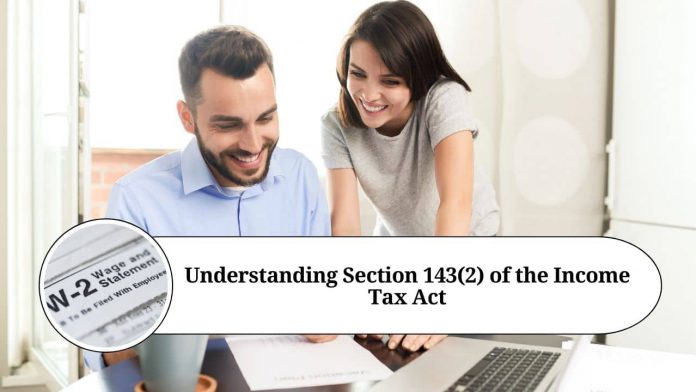Section 143(2) of the Income Tax Act is a critical provision that plays a significant role in the assessment process of taxpayers. It outlines the guidelines that the assessing officer must follow when scrutinizing a return of income that has been filed by a taxpayer.
The Scope of Section 143(2)
Section 143(2) applies to all taxpayers who have filed their returns of income. It provides for a procedure where the assessing officer may require the taxpayer to produce additional evidence or documents to support their claim for deductions or exemptions.
Assessing Officer’s Powers under Section 143(2)
The assessing officer has broad powers under section 143(2) to scrutinize a taxpayer’s return of income. They may summon the taxpayer or any other person who can provide relevant information or documents. The assessing officer can also examine any books of account or other documents that the taxpayer is required to maintain.
Procedure for invoking Section 143(2)
The assessing officer may invoke section 143(2) after examining the return of income and determining that further information is required to assess the taxpayer’s liability. The assessing officer must issue a notice to the taxpayer, indicating the reasons for invoking section 143(2) and the information or documents that the taxpayer must produce.
Time Limit for Issuing Notice under Section 143(2)
The notice issued under section 143(2) must be served on the taxpayer within six months from the end of the financial year in which the return of income was filed. If the notice is not served within this time limit, the assessing officer loses the power to invoke section 143(2).
Compliance with Notice under Section 143(2)
Once the taxpayer receives the notice under section 143(2), they must comply with the requirements within the specified timeframe. Failure to comply with the notice can result in penalties and interest being levied on the taxpayer.
Assessment after Notice under Section 143(2)
After the taxpayer has provided the required information or documents, the assessing officer will assess the taxpayer’s liability. If the assessing officer determines that there is a discrepancy in the taxpayer’s return of income, they may issue a notice under section 143(1) for further clarification or explanation.
Final Conclusion
Concluding Remarks In conclusion, section 143(2) of the Income Tax Act is an essential provision that enables the assessing officer to scrutinize a taxpayer’s return of income thoroughly. Taxpayers must ensure that they comply with the notice issued under section 143(2) to avoid any penalties or interest being levied on them.
Read Other Useful Blogs:
Frequently Asked Questions:
Q: What is Section 143(2) of the Income Tax Act?
A: Section 143(2) is a provision in the Income Tax Act that authorizes the Income Tax Department to issue a notice to a taxpayer for conducting limited scrutiny of their income tax return.
Q: When is a notice under Section 143(2) issued?
A: A notice under Section 143(2) is issued by the Income Tax Department when it has some doubts or queries regarding a taxpayer’s income tax return and wishes to conduct limited scrutiny of the same.
Q: How is the notice under Section 143(2) issued?
A: The notice under Section 143(2) is issued to the taxpayer either by post or by electronic means, such as email.
Q: What is the duration of the scrutiny under Section 143(2)?
A: The duration of the scrutiny under Section 143(2) is limited to a maximum of six months from the date of receipt of the notice.
Q: What is the purpose of the scrutiny under Section 143(2)?
A: The purpose of the scrutiny under Section 143(2) is to ensure that the taxpayer has correctly disclosed all their income and claimed all the deductions and exemptions as per the provisions of the Income Tax Act.
Q: What documents are required to be submitted during the scrutiny under Section 143(2)?
A: The taxpayer may be required to submit documents such as bank statements, books of accounts, bills, vouchers, and other relevant documents during the scrutiny under Section 143(2).
Q: What happens after the scrutiny under Section 143(2) is completed?
A: After the scrutiny under Section 143(2) is completed, the Income Tax Department will either accept the return as filed, or make adjustments to the income or deductions, and issue a notice for the same.
Q: What are the consequences of not responding to a notice under Section 143(2)?
A: If the taxpayer does not respond to a notice under Section 143(2), the Income Tax Department may make a best judgment assessment of the taxpayer’s income and tax liability, and issue a demand notice for the same.
Q: Can a taxpayer challenge the outcome of the scrutiny under Section 143(2)?
A: Yes, a taxpayer can challenge the outcome of the scrutiny under Section 143(2) by filing an appeal with the Commissioner of Income Tax (Appeals) or the Income Tax Appellate Tribunal.




















